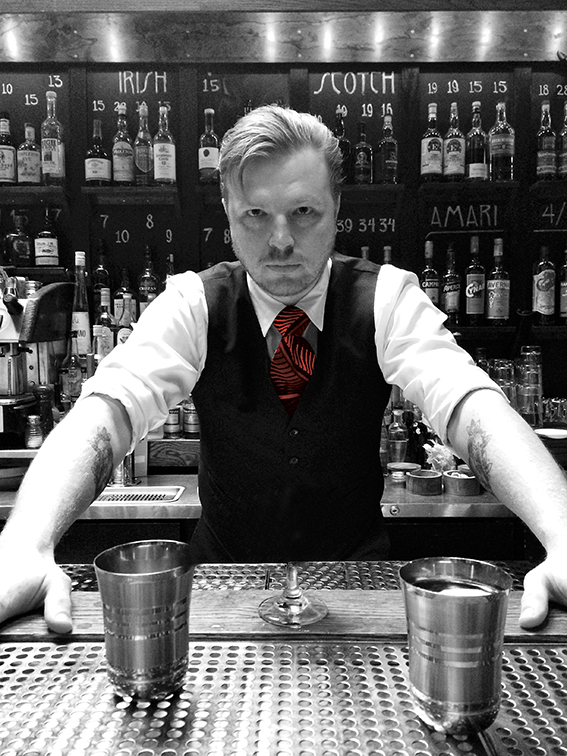SOUS VIDE. IT TRANSLATES TO ‘UNDER VACUUM’ and is the term widely used for cooking food very slowly in a vacuum-sealed plastic bag in a temperature-controlled water bath. The technology was developed at the end of the 18th century, but first used in the modern culinary world at Restaurant Troisgros in France. As bars and kitchens are closely related, this technology and technique has left the kitchen and grabbed a seat at a few of the finest bars in the United States.
I talked to Clint Spotleson at Counter Intuitive, whose current menu is a journey from Oahu to NYC via San Francisco and Los Angeles through the lens of a strange acid trip in a Chinese restaurant. He is using the sous vide technique to infuse scotch with lapsang souchong tea, and Lillet Rouge with oolong tea. The alcohol in both would evaporate under normal conditions, but being sealed in the bag allows for gentle heat to aid the infusion without the unfortunate side-effect of losing alcohol content.
Daniel Eun, of The Normandie Club and Walker Inn in Los Angeles, uses the technique to make fruit syrups and coconut bourbon for his Something Like an Old Fashioned cocktail, which combines the aforementioned coconut bourbon with apple brandy, almond demerara syrup, and Angostura bitters. He uses a temperature controlled bath and plastic bags to trap the flavour of coconut flakes and gently spread it through the bourbon.
He says: “For infusions, it allows for a controlled, more subtle addition of heat, so it not only reduces the time for infusion, you get flavours that you can’t really get from putting it on a stove or just letting it sit forever.” He adds: “Technically, it’s not really sous vide because that means ‘under vacuum’ and we rarely actually put things under vacuum while it’s in the immersion circulator (which adds another element to the extraction process).”
The reality is that, while the technology to create a temperature-controlled water bath is widely available and relatively inexpensive, restaurant quality vacuum sealers are not.
In my own experimentation, I have had great results and different flavours from the vacuum sealer, though sometimes liquids can get ‘stuck’ in solids when under pressure, which can greatly reduce your yield. I was lucky enough to work in a place that was kitted out pretty luxuriously with an industrial sealer and several immersion circulators. I was running a drink with watermelon juice and, in the effort to not waste anything, I thought it would be cool to infuse the gin in the drink with the rind that we were throwing away. I threw some rinds and some gin in a bag, vacuum sealed it – which forces the gin into the cellular structure of the rind – then let the pressure out to draw the liquid back out.
This can get a little tricky, and if you don’t stop the process at the right time can result in some pretty messy explosions and a lot of clean up. The result, though, is a completely raw and green rind flavour in the gin that would be unattainable any other way.
Ultimately, I think all these new techniques should be explored and used in ways that make your day as a bar tender easier and more efficient, without taking the spotlight away from what is in the glass. at the end of the day, it’s the glass in front of the customer that counts.



